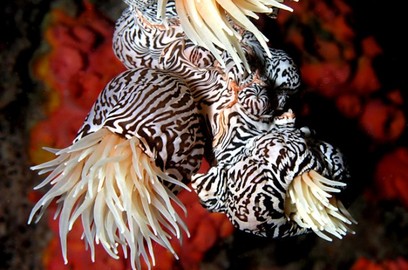 This is just cool ... I found this article on IFLS http://www.iflscience.com/plants-and-animals/new-order-anemones-revealed Sea anemones are cnidarians (same phylum as jellyfish and coral) that have been traditionally categorized in the order Actiniaria, which has 46 families totaling over 1,200 species. Researchers performing genetic analysis on sea anemones for the purposes of creating a detailed phylogenetic tree have revealed that at least one species was categorized so incorrectly, it warrants the creation of a new order. The details of the the research were published in PLOS ONE by lead author Estefanía Rodríguez of the American Museum of Natural History. Before DNA sequencing was available, species were categorized based on morphological features. For some organisms, like sea anemones, this presented certain challenges. "Anemones are very simple animals," Rodríguez said in a press release. "Because of this, they are grouped together by their lack of characters—for example, the absence of a skeleton or the lack of colony-building, like you see in corals. So it wasn't a huge surprise when we began to look at their molecular data and found that the traditional classifications of anemones were wrong." After analyzing the genomes of only 112 species and comparing it to physical features, there was plenty of information to reorganize the sea anemone’s tree of life. There had previously been four suborders, but now only two remain. Perhaps one of the biggest surprises is that one well known species wasn’t even a sea anemone at all. The organism, previously known as Boloceroides daphneae, was believed to be one of the largest sea anemones alive, as it had tentacle-like structures exceeding 2 meters (6 feet) in length. It was found near hydrothermal deep in the Pacific Ocean vents just recently in 2006. The genetic analysis has revealed that this animal is not a sea anemone at all. To properly classify it, a new order, family, and genus name had to be created. The species is now referred to as Relicanthus daphneae, and is currently the sole member of the order, though researchers expect other members will be added with further research. The striking appearance of R. daphneae to sea anemones is due to convergent evolution. “Even though this animal looks very much like a sea anemone, it is not one,” Rodríguez explained in the press release. “Both groups of animals lack the same characters, but our research shows that while the anemones lost those characters over millions of years of evolution, R. daphneae never had them. Putting these animals in the same group would be like classifying worms and snakes together because neither have legs.”
0 Comments
Leave a Reply. |
Archives
September 2016
Categories
All
|
 RSS Feed
RSS Feed
